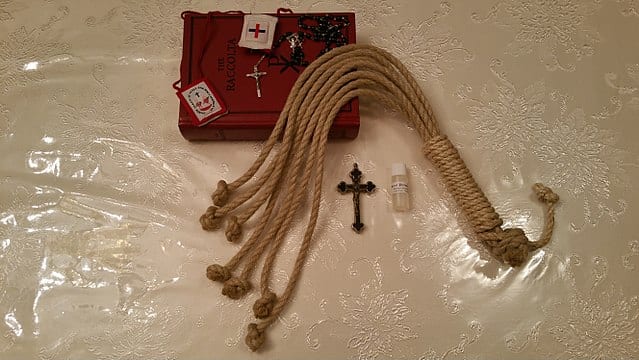
This was a comment (+ my reply) underneath my article for the National Catholic Register: “Bodily Mortification is Quite Scriptural” (2-28-19). His words will be in blue.
*****
Penance and repentance are, of course, part of Christian endeavor. But I would be interested in what psychologists at, say the University of Michigan, have to say about the concept of “mortification.”
Is there a “slippery slope” danger of unhealthy physical and psychological mortification (frequent when I was in Catholic school and we were put in self-denial competition that got out of hand, common I’ve found when talking to peers).
Is mortification based on a sick “it hurts so good” approach to self-denial [?].
Are not many eating disorders traceable to making fasting and attendant self-punishment “virtuous”?
Thanks.
1. We have to conform our beliefs and behavior to biblical and Catholic models, not vice versa.
2. I care almost not at all for what “psychologists at the University of Michigan” say about this or just about anything else (having minored in psychology and majored in sociology in college, and having seen how much in those fields—not all—is secular nonsense). Listening to the psychologists is a lot of the reason for why the Church is in the present mess that it is in.
3. Any good thing can be—and is—distorted. It is human nature to go to extremes and to pit one thing against another. We don’t throw the baby out with the bathwater.
C’mon, Dave. You’re better than that. [regarding my claim in #2]
See: Wikipedia: “Debate on the causes of clerical child abuse” / section: “Impact of psychology from previous decades”:
Some bishops and psychiatrists have asserted that the prevailing psychology of the times suggested that people could be cured of such behavior through counseling. [2] Thomas G. Plante of Stanford University and Santa Clara University wrote: “Almost all the cases coming to light today are cases from 30 and 40 years ago. We did not know much about paedophilia and sexual abuse in general back then. In fact, the vast majority of the research on sexual abuse of minors didn’t emerge until the early 1980’s. So, it appeared reasonable at the time to treat these men and then return them to their priestly duties. In hindsight, this was a tragic mistake.” [3] Robert S. Bennett, the Washington attorney who headed the National Review Board’s research committee, named “too much faith in psychiatrists” as one of the key problems concerning Catholic sex abuse cases. [4] About 40% of the abusive priests had received counseling before being reassigned. [5]
- “Full text of Benedict XVI essay: ‘The Church and the scandal of sexual abuse‘“. Catholic News Agency. Retrieved 2019-04-15.
- ^ Baars, Conrad W. (1972). “The Role of the Church in the Causation, Treatment and Prevention of the Crisis in the Priesthood”. The Linacre Quarterly. 39 (1). ISSN 0024-3639. Retrieved 2 July 2018.
- ^ Steinfels, A People Adrift (2003). pp. 40–6
- ^ Plante, Thomas: A Perspective on Clergy Sexual Abuse, San Jose Mercury News, March 24, 2002 (updated online version)
- ^ Filteau, Jerry (2004). “Report says clergy sexual abuse brought ‘smoke of Satan’ into church”. Catholic News Service. Archived from the original on 2004-06-26. Retrieved 2008-03-10.
***
(originally 3-3-19 on Facebook)
Photo credit: Anupam at English Wikipedia (4-8-17). The image depicts a discipline used in the Christian practice of mortification of the flesh. The discipline’s seven cords represent the seven deadly sins (for which the believer using it makes penance) and the seven virtues (which the believer works to emulate). In this image, the seven cords are lying on top of the Raccolta, a text which contains several acts of reparation. [Wikimedia Commons / Creative Commons Attribution-Share Alike 4.0 International license]
***













